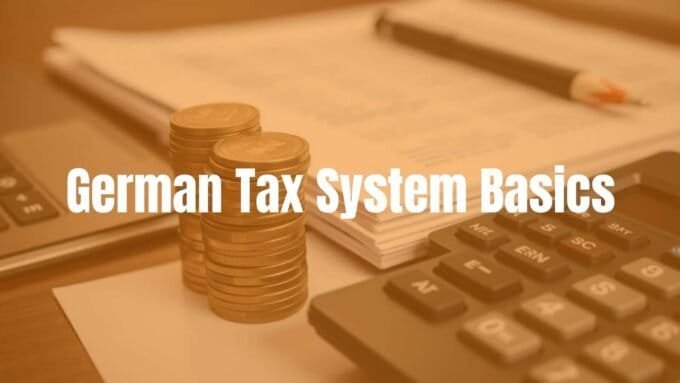After World War II, Germany split into East and West. These two parts grew into very different societies that reflected the wider fight between capitalism and communism. The split lasted for over forty years and showed up in government, the economy, daily life, and culture. Knowing these differences helps explain why some gaps and local identities still exist in Germany more than thirty years after reunification.
Why Did Germany Divide into East and West?
The division grew out of the end of World War II and the start of the Cold War. The Allied powers beat Nazi Germany, but they had very different ideas for its future. Those differences led to a split that hardened over time.
Key Events Leading to the Split After World War II
After Germany surrendered on May 8, 1945, the United States, the United Kingdom, France, and the Soviet Union met at Yalta and Potsdam to plan what came next. They agreed to divide Germany into four occupation zones. Berlin, though deep inside the Soviet zone, was also divided into four sectors.
- U.S.: south
- France: southwest
- Great Britain: northwest
- Soviet Union: east
- Berlin: split into four sectors despite being in the Soviet zone

The Soviet Union ruled its area with tight control, took heavy reparations, and forced politics under a communist system. The Western Allies started building democratic institutions and market economies. Tensions rose and set the stage for the Cold War.
Formation of East Germany and West Germany
In 1947, Britain and the U.S. joined their zones into “Bizonia.” France later joined to form the “Trizone.” This move countered Soviet restrictions and pushed the western zones toward a single state. In June 1948, Stalin blocked land access to West Berlin. The Western Allies answered with the Berlin Airlift, supplying the city by air until the blockade ended on May 12, 1949.
- May 23, 1949: Federal Republic of Germany (West Germany) formed
- October 1949: German Democratic Republic (East Germany) created
From then on, two opposing German states existed side by side, each with a different political and economic system.
Significance of the Berlin Wall
Berlin stayed divided inside East German territory. Many East Germans used the city to escape to the West. By the early 1960s, millions had left, causing serious problems for East Germany.
- August 13, 1961: construction of the Berlin Wall began
- Length: about 96 miles; average height: about 11.8 feet
- Features: concrete walls, fences, guard towers, patrols, and gun positions
- November 9, 1989: the Wall fell after 28 years
The Wall became the most visible sign of the Cold War, cutting through families, friends, and daily life until its fall.
What Were the Political Differences Between East and West Germany?
The two states had sharply different political systems that shaped how people lived and what rights they had.
Comparison of Government Structures
| Feature | West Germany (FRG) | East Germany (GDR) |
|---|---|---|
| System | Democratic, multi-party, parliamentary | One-party communist state |
| Elections | Free and competitive | Not free or fair; used to confirm party rule |
| Rights and courts | Strong legal protections and checks and balances | State power overrode individual rights |
| Political opposition | Allowed | Suppressed |

Role of the Soviet Union and Western Allies
West Germany aligned with the U.S., the U.K., and France. It joined NATO in the 1950s and took part in European groups that later formed the European Union. This brought security, aid, and stability and linked West Germany to other democracies.
East Germany followed Moscow’s lead and joined the Warsaw Pact. The Soviet Union shaped its policies and kept a close grip on the government. Many decisions served Soviet goals, which limited East Germany’s independence and kept it on a socialist course.
Impact on Civil Liberties and Freedoms
West Germans had free speech, free press, and freedom of assembly. They could travel, debate, and criticize the government openly.
East Germans faced tight controls over media, schools, and public life. The Stasi, the state security service, built a wide network of informants and watched the population. Fear and self-censorship were common, and dissent brought punishment.
How Did Economic Systems Differ in East and West Germany?
The two economies followed different models, and the gap showed up in growth, jobs, and consumer goods.
Planned Economy in the East vs. Market Economy in the West
| Aspect | West Germany | East Germany |
|---|---|---|
| Model | Social market economy (capitalism with social welfare) | Centrally planned socialist economy |
| Ownership | Mainly private | State-owned |
| Decision-making | Market forces set production and prices | Planning committees set output and prices |
| Outcomes | Competition, innovation, and rapid growth (Wirtschaftswunder), aided by the Marshall Plan | Inefficiencies, weak innovation, and poor response to consumer demand |
Employment, Industry, and Standards of Living
- West Germany: diverse industries, rising wages, many career paths; strong recovery in areas like the Rhine Valley; high standard of living and a solid social safety net.
- East Germany: some early strengths but lagged behind later; central planning and lack of competition held back growth; by the 1980s the economy was largely stagnant, wages were lower, and choices were fewer; the east still trails the west today in output.
Quality of Infrastructure and Availability of Consumer Goods
- West Germany: modern roads, communications, and housing; West Berlin became a lively cultural and economic center; wide range of consumer goods like cars, electronics, and fashion.
- East Germany: underinvestment led to worn roads and buildings; public services often fell behind; shortages and long waits for basic items were common.

What Was Daily Life Like in East vs West Germany?
Everyday life felt very different on each side, shaping people’s habits, hopes, and sense of who they were.
Lifestyle, Culture, and Social Norms
West Germany had a lively, consumer-centered culture. People had many media choices, and trends in fashion, music, and art often followed global styles. Personal choice and expression were widely accepted.
East German life was more collective and structured. The state promoted socialist values and community over individualism. Cultural life existed but had to fit party lines, and censorship was common. Choices were limited, yet many people built a distinct East German identity based on solidarity and practical problem-solving.
Education and Healthcare Systems
| Area | West Germany | East Germany |
|---|---|---|
| Education structure | Decentralized; states set policies | Centralized; guided by socialist doctrine |
| Focus | Critical thinking; varied paths (vocational and university) | Collective goals; practical skills for planned economy |
| Healthcare | Universal access through insurance; high-quality care | State-run universal system; basic care but often short on modern equipment and some medicines |
| Childcare | Less extensive historically | Wide childcare support for working mothers |
Travel and Freedom of Movement
West Germans could travel freely at home and abroad. Getting a passport was routine, and people visited other countries for work, family, or tourism.
East Germans had strict limits on travel. The Berlin Wall and the inner German border stopped most people from leaving. Travel to other communist countries was sometimes allowed, but trips to the West were rare and usually limited to trusted party members or officials. Trying to escape risked prison or worse.
How Did Media and Information Access Differ?
Control of news and ideas played a major role in keeping the two systems apart. Each side’s media reflected its politics and shaped public debate and knowledge.
Freedom of the Press and Censorship
In West Germany, the press was free and independent. Newspapers, radio, and TV offered many views and did investigative reporting. People could read and watch content from inside and outside the country.
In East Germany, the media served the state. Censorship was strict, and the press worked to support the Socialist Unity Party. Critical voices were blocked, and the official line dominated.
Role of Propaganda and State Media
West German media had biases like any free press, but outlets competed and varied. There was no single state authority directing content, so coverage could be wide-ranging and critical.
In East Germany, state media promoted socialism, praised the GDR and its allies, and portrayed the West as failing. Unfavorable news was hidden or spun. Even so, many East Germans picked up West German broadcasts, giving them a different view from the official one.
What Are the Lasting Effects of East vs West Germany Differences?
More than thirty years after the Wall fell in 1989 and reunification in 1990, the old divide still shows in the economy, society, and attitudes.
Economic and Social Legacy in Modern Germany
- Economic output in the former East is about 73% of the former West.
- Wages: the average in the East is about 88.8% of the West.
- Unemployment is generally higher in the eastern states.
- About four in ten people in the East say they feel treated as second-class citizens.
- Large out-migration of young workers after 1990 cut the East’s population by about 2.2 million; the population there is older and still shrinking in many areas.
- Political attitudes differ: support for The Left party is stronger in the East.
Current Regional Differences and Life Satisfaction
A Pew Research Center survey in spring 2019 found broad support for reunification and improved living standards in both areas. Life satisfaction in the East rose sharply: the share rating their life at 7 or higher (out of 10) went from 15% in 1991 to 59% in 2019.
| Measure (2019) | Former West | Former East |
|---|---|---|
| Satisfied with how things are going in the country | 61% | 50% |
People in the former West tend to be more positive about democracy, the education system, and the future. Views of the EU are warmer in the West. Support for far-right parties like the AfD is higher in the East. Views of minority groups in the East are more negative on average, though favorability toward groups such as Jews and Muslims has risen a lot since 1991. A 2023 survey found that six in ten Germans still think differences between East and West are greater than what unites them.











Leave a comment